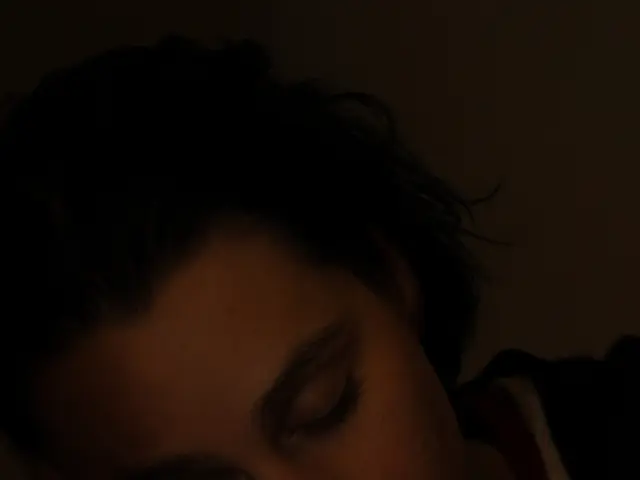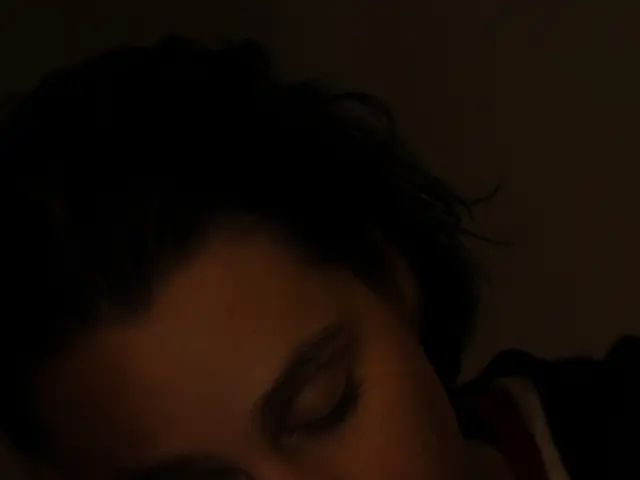Nightmare-Induced Terrors: Understanding Them and Strategies for Prevention
Rolling out of bed, soaked in sweats and panic, uncontrollable screams echoing through the night - yep, sleep terrors aren't anyone's idea of a good time. These nightmares without dreams affect around a third of children, but even grown-ups can experience them too, usually because of stress or underlying sleep issues. Here's the skinny on these terrifying nocturnal episodes.
What the Heck Are Sleep Terrors?
So, spooning your bedmate only to have them suddenly sit up, scream, and flail about like a beached whale? That's a sleep terror. You might not be able to rouse them during these episodes, and they'll probably have no recollection of the event come morning. They typically occur during deep sleep stages in Non-rapema (NREM) sleep cycles.
Where Do These Things Come From?
We're still not exactly sure what incites sleep terrors. Some researchers think it could be linked to development, environmental factors, organic disorders, psychological conditions, or even genetics. For kids, the little rascals usually outgrow the condition, but if you're an adult experiencing sleep terrors, it might indicate underlying psychiatric issues.
Signs and Symptoms:
- Sleepwalking into danger: Injuries might occur during sleepwalking episodes connected to sleep terrors.
- Disrupted slumber: Sleep terrors can cause sleep disturbances, leading to daytime sleepiness and exhaustion.
- Anxiety and despair: Sleep disruptions and altered sleep patterns can bring on feelings of anxiety and depression.
- Migraines: Migraines appear to be associated with sleep terrors since they might be triggered by disturbed serotonin levels.
Treatment Time
Not every case of sleep terrors demands medical intervention. However, if the episodes are frequent or particularly intense, your healthcare provider may recommend psychotherapy or Benzodiazepine medications to suppress stages 3 and 4 of NREM sleep.
Homemade Remedies:
- Keep a cozy sanctuary: Remove any hazardous objects from the room, and push furniture away from the bed and windows.
- Hands off: Avoid waking someone during an episode. Stirring them could make the episode longer and more intense.
- Style and rhythm: Establish a consistent sleep schedule and good sleep habits for optimal sleep quality.
- Sip tea, not Red Bull: Avoid drinking stimulants like caffeine and alcohol before bedtime.
- Nip underlying disorders in the bud: If you think you might have a sleep disorder, treating it could help prevent sleep terrors.
In conclusion, sleep terrors are generally harmless and often pass on their own. The key is maintaining a consistent sleep schedule, ensuring a secure sleep environment, and avoiding waking someone during an episode. Got a hunch that you might have parasomnia? Give the ShutEye® app a spin for a complimentary sleep study and tailored sleep analysis. ShutEye® deploys polysomnography and AI algorithms to monitor sleep patterns accurately.
- Sleep terrors, characterized by sudden sitting up, screaming, and flailing during deep sleep stages, are commonly caused by underlying sleep issues, stress, or even genetic factors.
- Sleep terrors may lead to sleepwalking into danger, disrupted slumber, feelings of anxiety and depression, and potential migraines due to disturbed serotonin levels.
- While not every case of sleep terrors requires medical intervention, frequent or intense episodes might indicate underlying psychiatric issues and may be treated with psychotherapy or Benzodiazepine medications.
- To prevent sleep terrors, maintain a cozy and safe sleep environment, establish a consistent sleep schedule, avoid stimulants like caffeine and alcohol before bedtime, and consider addressing any potential underlying sleep disorders.
- For a comprehensive sleep study and tailored sleep analysis, try the ShutEye® app, which uses polysomnography and AI algorithms to monitor sleep patterns accurately, helping identify and treat parasomnia and other sleep disorders.








